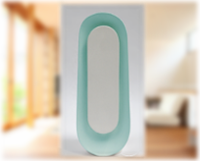Indoor Air Quality
Indoor air quality, a real public health issue.
We live more 80% of our time in close space : transport, work, home.
According to the official organizations, the air inside our homes is 5 to 10 times more hazardous than the air outside.
VOC measurment in individual home
The contamination caused by microorganisms like bacteria, viruses, spores and fungi become a growing problem in different parts of human activity.
Cleaning products, building materials, airborne microorganisms, pollen and cigarette smoke are all sources of pollution causing loss of concentration, asthma, allergies.
The effects of breathing these pollutants include dizziness, irritability, coughing, sneezing, dry eyes, hay fever, allergies, asthma symptoms, sinus problems, ear infections, depression, fatigue, headaches, nausea, breathing problems, respiratory infections, etc. In fact, according to the Environmental Protection Agency :
-
20% of all employees have a major illness related to indoor air pollution such as allergies, asthma, autoimmune diseases, etc.
-
Billions of dollars are spent annually for medication to help Americans breathe or cure their respiratory illnesses.
-
EPA estimates an 18% annual production loss to American business due to poor indoor air quality.
And according to the World Health Organization, 40% of all buildings pose a serious health hazard due to indoor air pollution
Asthma
Asthma is a very common, highly treatable lung condition.
Millions of individuals worldwide, children and adults, carry a diagnosis of asthma.
Asthma’s symptoms relate to breathing and to the respiratory system. (About Asthma – Second Edition)
For more information :
Read this American asthma control program
Visit The International Study of Asthma and Allergies in Childhood website

